Naples is considered the world capital of presepe. Interestingly, sellers and artisans in this city are very tolerant of having their creations photographed. In both cathedrals and workshops, people approached me not to prohibit photography, as in Rome, but rather with a certain pride in their products and their city: "Beautiful, isn't it?"
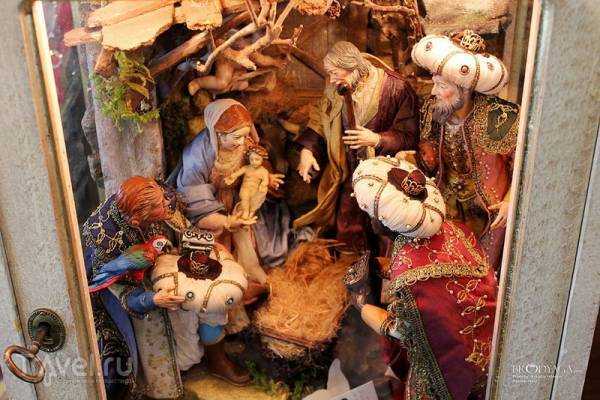
I specifically asked permission to take photos in shops and received only positive answers everywhere.
Only in one cathedral at the beginning of Via San Gregorio Armeno, for some reason, a female security guard politely asked not to take photos, and bored Pakistanis in an alley "joked" - a euro for a photo!

The history of the Neapolitan presepe is very long. Even in ancient Roman times, residents brought clay figurines to the local temple as offerings to the saints of the day. The temple stood on today's Via San Gregorio Armeno. Craftsmen's stalls were located around the temple, and a brisk trade in figurines flourished.

According to another version, in honor of the Sigillaria holiday, people bought clay figurines—"sigills"—representing their deceased relatives (penates). The figurines were given to friends and acquaintances, mostly children. Children placed the sigills in special niches. On the eve of the holiday, the entire family gathered in front of the niches, setting out wine and treats for their ancestors. And the next morning, gifts appeared next to the figurines, as if presented by their ancestors on the festive night.
The holiday was held around the 20th of December. In fact, it's completely analogous to modern New Year and Christmas traditions!
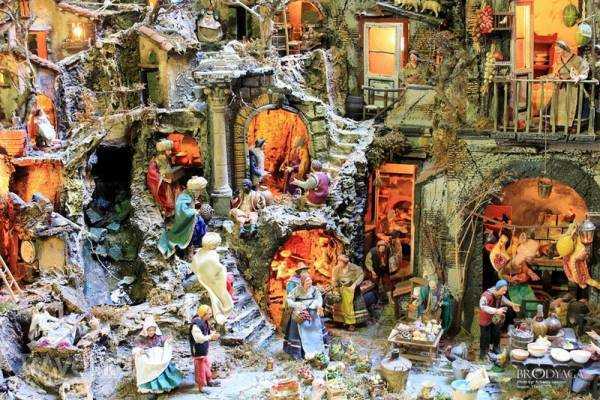
With the advent of Christianity, the ancient tradition was transformed into the cult of new saints, and people continued to make figurines, stage scenes from them, and give them to each other, now at Christmas.

According to the generally accepted version, the first "modern" prèsepe was performed by Saint Francis of Assisi in the town of Greccio in 1223. The tradition then steadily evolved. Prèsepes were performed live or made in various sizes from wood, clay, wax, papier-mâché, and other available materials.

The craze for this new form of votive offering took off again in Naples with the accession of the new king, Charles of Bourbon, in 1735. Charles commissioned local artisans to create new presepes for every Christmas. Gradually, the king's passion spread to the Naples aristocracy, and a genuine competition began: whose presepe would be the best, largest, and most luxurious. The main characters were dressed in luxurious 18th-century court costumes, and Mary and Joseph effectively became the queen and king.
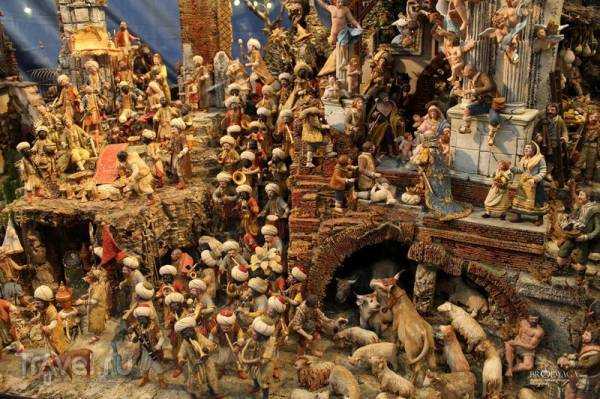
The number of all sorts of characters grew so large that entire doll towns were built, complete with every category of people and animals inhabiting them. Italianate houses with bazaars, mills, workshops, bridges, fountains, ancient ruins, and thousands of tiny details depicted, as it were, a "small cave" in the Syrian desert. Of all the historical participants, perhaps only the sheep, goats, and the baby Jesus retained their original appearance. Except that Jesus was transformed into a blond man with golden locks.

Now let's stroll through the streets of Naples. The first presepe we encountered was at the Duomo di Napoli. It's quite modest, but there are already the Magi bearing gifts, then, apparently, shepherds, and beyond them, a fragment of an Italian city with merchants, onlookers on balconies, and, of course, bunches of the local, gigantic lemons. The lemons in Naples are truly shocking in their size!
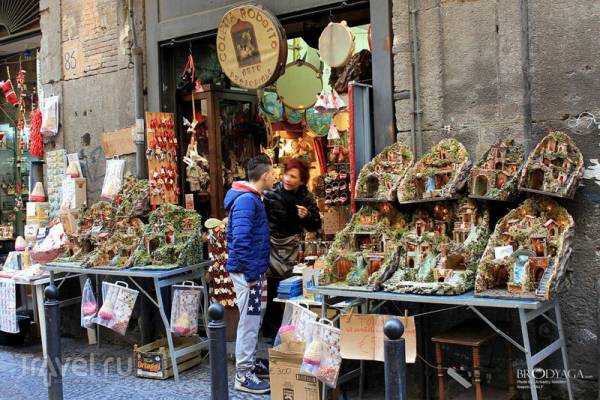
The first city shop I came across had simple, homemade presepe. There were lights on, water running. There were no limits to the imagination. And even sockets and wires!

The beginning of the famous Via Gregorio Armeno. A single black man with his Louis Vuittons and Dolce & Gabbanas. Further down the road, there are practically none.
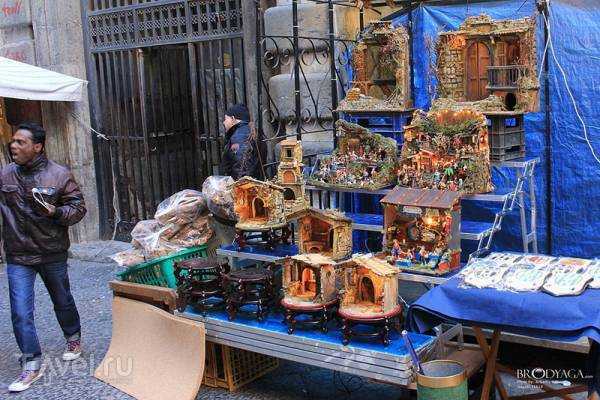
Here are the packs from the alley on Gregorio Armeno. Their facial expressions are certainly funny. But at least they're not as wild as the blacks.
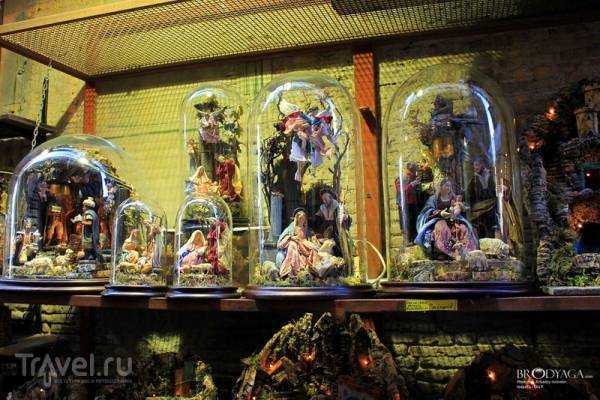
Some presepe comes in cute, clear bottles.
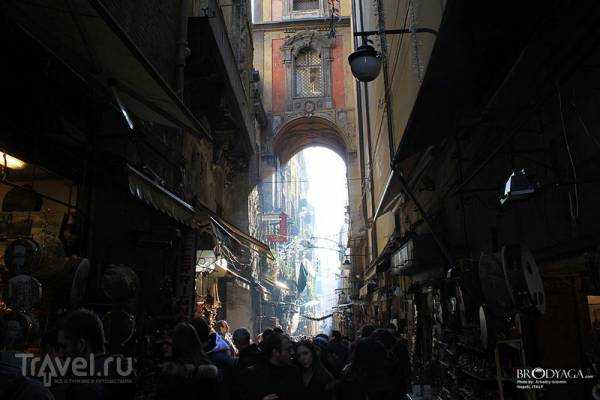
The street itself is incredibly picturesque. During the day, it's incredibly crowded. It's difficult to even walk, let alone take photos.

Source: travel.ru

